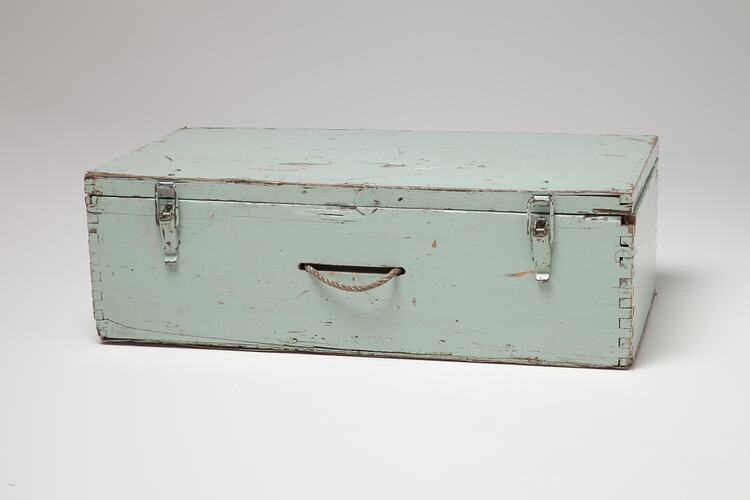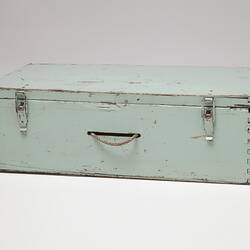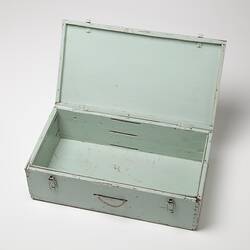Summary
Small rectangular green-painted travelling case, which was brought to Australia by Ale Liubinas when she migrated from Lithuania via a German displaced persons camp in 1949. The case was made by Ale's father from pine trees on their Lithuanian farm.
In 1944 the family fled Lithuania which had been invaded by Russian forces in 1940. The family used the travelling case to carry their belongings. They kept it for four years in a displaced persons camp and it was then used by Ale to contain her modest belongings when she migrated to Australia with her family.
After arriving in Melbourne, the family used the case as a table as they had little furniture. Ale married fellow Lithuanian refugee Algis in 1953 and had four sons.
Physical Description
Small rectangular box made from pine timber and painted green. It has two metal latches which fixes closed the lid and a rope handle threaded through a slot on the front side of the box.
Significance
This case is a poignant symbol of the refugee experience of displacement and loss of homeland, family and property. The case embodies the family home, made from the trees grown on the property, and its modest proportions demonstrate the material losses of fleeing homeland.
More Information
-
Collecting Areas
-
Acquisition Information
Donation from Mrs Ale Liubinas, 02 Oct 2008
-
Place & Date Made
-
Place & Date Used
-
Place & Date Used
-
Classification
-
Category
-
Discipline
-
Type of item
-
Overall Dimensions
850 mm (Width), 350 mm (Depth), 210 mm (Height)
-
References
Ale published an autobiographical novel about her life from the Russian invasion of Lithuania in 1940, her years of displacement, migration to Australia in 1949 and settlement, and her return visit to Lithuania in 1992. Liubinas, Ale. Homeland lost: an autobiographical novel (Sid Harta Publishing,1998, 2003) [IDC Library: A823.4 L783ho]
-
Keywords
Brought Goods, Immigrant Voyages, Immigration, Lithuanian Immigration, Luggage



